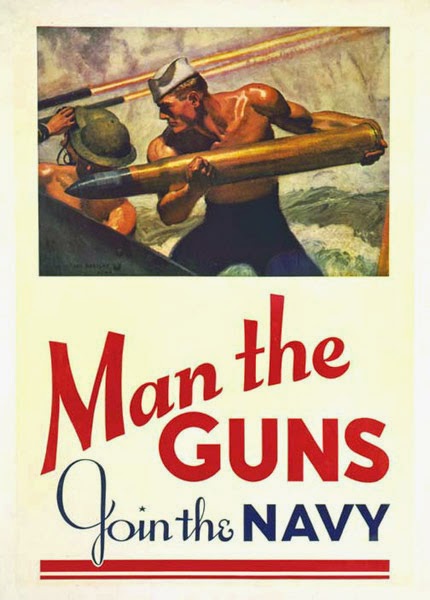On the morning of October 25, 1944, the escort carrier group “Taffy 3” was surprised by a large Japanese force which included cruisers and the heaviest battleship in the world, the Yamato. This small group of escort carriers and “tin can” destroyers was all that stood between the Japanese and the American invasion force at Leyte in the Philippines. In part of what was to be called the Battle of Leyte Gulf, a handful of destroyers and destroyer escorts protected “jeep carriers” (CVEs) in a suicidal run against a vastly superior Japanese force. The names USS Johnston (DD-557), USS Hoel (DD-533), USS Heermann (DD-532) and USS Samuel B. Roberts (DE-413) are among those of naval lore for their actions in this battle as they tried to screen the carriers. Of note in these tales of bravery are the stories of the men who kept firing their comparatively small five inch guns against heavily armored Japanese vessels after their ships had been severely damaged or they were out of ammunition.
 |
| Note the five 5-inch turrets on the Fletcher-class destroyers. |
The 5-inch gun was not the main weapon in a WWII-era USN destroyer’s arsenal. That honor belonged to the Mk 15 torpedo. A Fletcher-class destroyer usually mounted ten, while a destroyer escort such as Samuel B. Roberts had three. Yet after these were fired, they could not be reloaded at sea, and the 5-inch guns became a ship’s primary weapon. The Mk 30 single mounted 5-inch/.38 caliber gun was the largest cannon on these ships. Widely regarded as the best dual purpose gun in WWII, it was put on almost everything afloat in the U.S. Navy.
.
During the battle, the heaviest guns that the escort carrier group Taffy 3 had at their disposal were the 5-inch ones. Besides the destroyers’ guns, each CVE had a single 5-inch gun in an open mount. As the group desperately tried to run from the shocking appearance of the Japanese fleet, American sailors and pilots tried to throw everything they could to delay the onslaught.
The Mk 30 5-inch gun fired a round which weighed 55 lbs. For comparison, the 16-inch guns on an Iowa-class battleship fired shells weighing 2,700lbs, and the Yamato fired shells weighing over 3,000lbs out of her 18.1-inch guns. In addition, the small shells fired by the American destroyers could not penetrate the armor on the heavy cruisers that were at the front of the fleet overtaking the American carriers. Even with these facts, the small ships, led by Johnston, engaged the heavier Japanese ships, firing hundreds of shells during the course of the battle. Samuel B. Roberts reportedly fired over 600 rounds in just over a half hour, which is astounding as there were only two guns onboard the ship. Numerous Japanese ships were hit in the barrage flying from the guns of the American ships. The accuracy of the destroyer’s gunfire was helped by the proximity of combat, the superior American radar guided fire control system, and the sheer size of their foes.
In this David versus Goliath drama, the courage and determination of the “small boys” proved decisive in slowing down and confusing the Japanese fleet. In the end, the Japanese admiral called off his fleet and Taffy 3, as well as the invasion fleet, were saved. The men on the destroyer screening force paid dearly as several ships were lost, but their sacrifice helped prevent further disaster.






2 comments:
War is a fascinating subject. Despite the dubious morality of using violence to achieve personal or political aims. It remains that conflict has been used to do just that throughout recorded history.
Your article is very well done, a good read.
Your blog contains helpful information, thank you for sharing it with us. On our website, we provide important information about USS Johnston as well as our blog.
Post a Comment